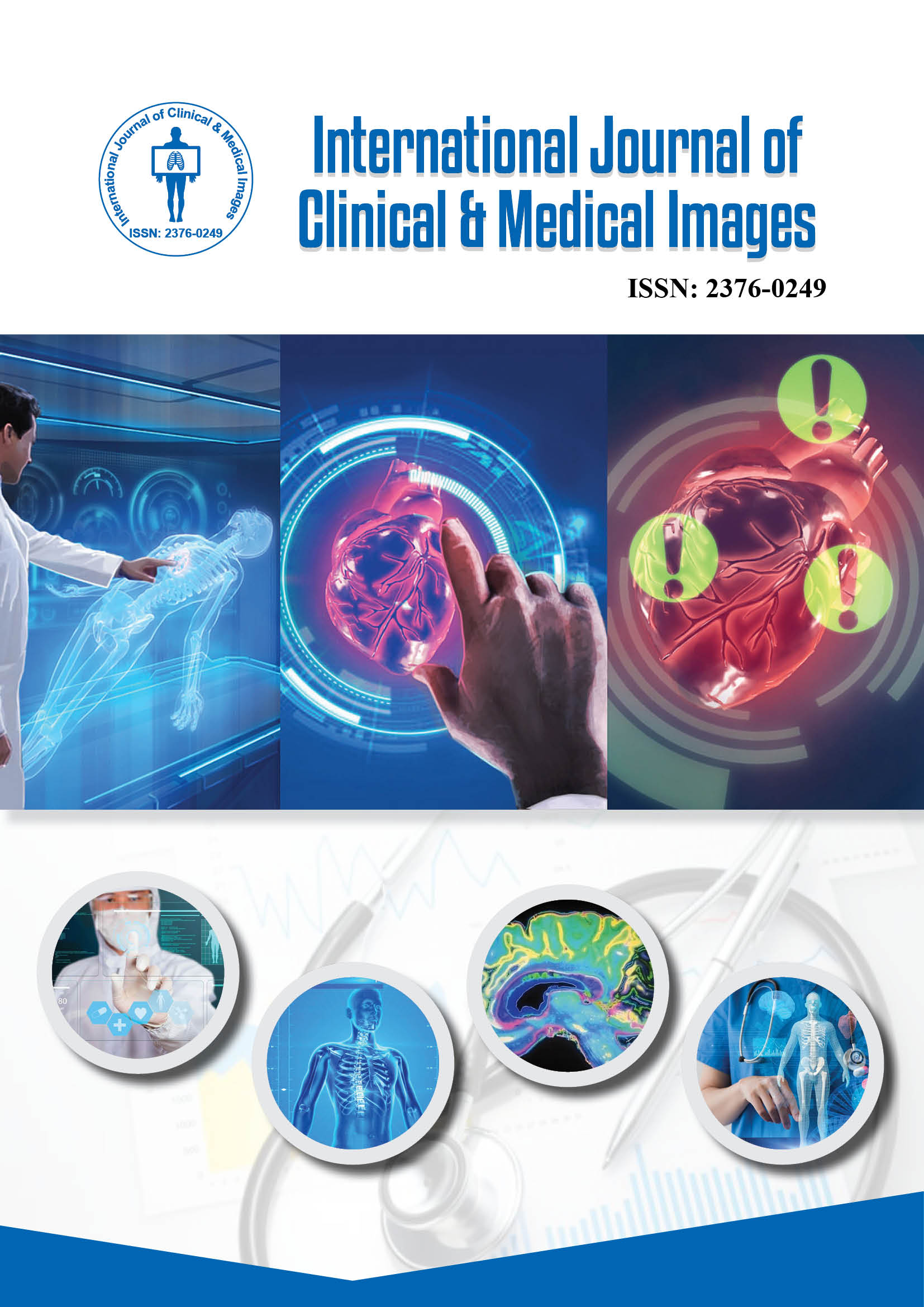2376-0249
Clinical-Medical Image - International Journal of Clinical & Medical Images (2024) Volume 11, Issue 12
Author(s): Lee Xiaopeng*
Department of Surgery, Jeonbuk National University Medical School and Hospital, Jeonju 54907, Republic of Korea
*Corresponding Author:
Lee Xiaopeng
Department of Surgery
Jeonbuk National University Medical School and Hospital
Jeonju 54907, Republic of Korea
E-mail:eexiaopeng@dce.com
Received: 01 December, 2024, Manuscript No. ijcmi-25-160160; Editor assigned: 02 December, 2024, Pre QC No. P-160160; Reviewed: 18 December, 2024, QC No. Q-160160; Revised: 23 December, 2024, Manuscript No. R-160160; Published: 30 December, 2024, DOI: 10.4172/2376-0249.1000993
Citation: Xiaopeng L. (2024) Radiology and Cancer Diagnosis: A Lifesaving Connection. Int J Clin Med Imaging 11: 993.
Copyright: © 2024 Xiaopeng L. This is an open-access article distributed under the terms of the Creative Commons Attribution License, which permits unrestricted use, distribution, and reproduction in any medium, provided the original author and source are credited.
Radiology plays a pivotal role in the diagnosis, staging, and monitoring of cancer. The advent of advanced imaging technologies has revolutionized cancer detection, enabling early diagnosis, precise localization of tumors, and assessment of treatment response. Methods such as X-ray, CT scans, MRI, and PET scans provide detailed, high-resolution images that help healthcare professionals to identify abnormal growths and changes in tissue structure. Early detection through these imaging modalities significantly improves survival rates, as it allows for timely intervention. Radiologists work closely with oncologists to develop effective treatment plans, track disease progression, and identify potential metastasis, thus ensuring comprehensive patient care. This manuscript explores the critical connection between radiology and cancer diagnosis, highlighting the transformative impact of modern imaging technologies on improving patient outcomes.
The integration of radiology into the diagnosis of cancer has revolutionized the way healthcare professionals detect and monitor malignancies. Radiological imaging provides critical information that allows for the visualization of internal structures, making it a cornerstone of modern cancer care. Imaging techniques such as X-rays, CT scans, MRI, and PET scans are indispensable in identifying cancers at early stages when treatment options are most effective. Early detection through radiology not only facilitates the implementation of timely interventions but also enhances the accuracy of diagnosis, which can ultimately lead to better prognoses and survival outcomes. The role of radiology in cancer diagnosis is multi-faceted. Initially, it aids in the identification of abnormalities that may suggest malignancy.
Once a potential cancer is identified, radiology plays an essential role in determining the size, location, and type of tumor, all of which are crucial for staging the cancer. Accurate staging is vital for selecting the appropriate treatment regimen. For example, a PET scan, which provides information on metabolic activity, is particularly useful in identifying areas of metastasis helping doctors understand the extent to which cancer has spread in the body. Staging, combined with imaging data, allows oncologists to make informed decisions regarding surgery, chemotherapy, or radiation therapy [1,2].
Cancer diagnosis; Imaging technologies; Cancer staging
None.
None.
[1]Slaton JW, Balbay MD, Levy DA, Pisters LL and Nesbitt JC, et al. (1997). Nephrectomy and vena caval thrombectomy in patients with metastatic renal cell carcinoma. Urology 50(5): 673-677.
Google Scholar, Crossref, Indexed at
[2]Moch H, LC Antonio, AH Peter, Ulbright TM and Victor ER, et al. (2016). The 2016 WHO classification of tumours of the urinary system and male genital organs part: A renal, penile, and testicular tumours. Eur Urol 70 (1): 93-105.
 Awards Nomination
Awards Nomination

